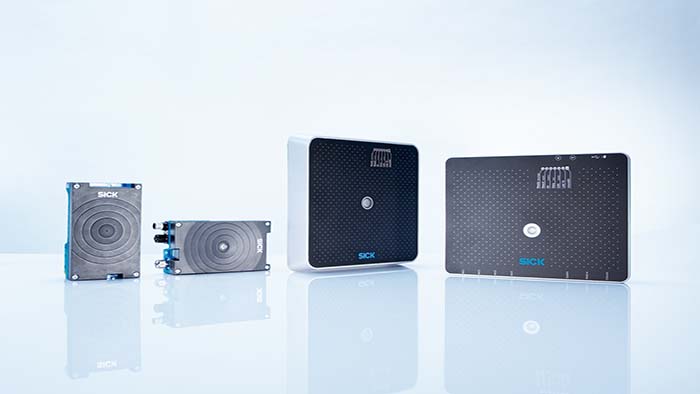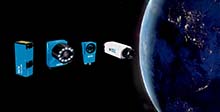Three identification technologies have dominated the market for many years: RFID, laser-based barcode scanners and camera-based code readers. The essential task of these technologies is the traceability of products and the control of processes. For every identification task, the question arises as to which technology is best suited. And as so often in life, there is not just one answer to all questions. The best possible solution is always individually tailored to the technical and economic conditions of the application.
Use and function of RFID (Radio Frequency Identification)
RFID interrogators are compact and robust, and ideally suited for operation in logistics.
Basics of RFID technology
Basically, in addition to the electronic data carriers (RFID labels), only one device is needed to use RFID technology, the interrogator. It forms the reading and writing unit for the RFID labels (also called tag or transponder). In a fraction of a second, all the necessary information is written or read on the label, which is available in various forms and formats. The majority of RFID-based identification solutions are realised with passive transponders. In contrast to active transponders, which allow ranges of more than a hundred metres, passive transponders do not have their own energy source and are therefore many times cheaper. Hereby comparing tag costs to barcode label it becomes clear that additional cost arise, which means that RFID technology is mainly used in closed production processes. RFID transponder systems are divided according to the frequency of the radio waves used into near-field technologies, such as Low Frequency (LF) and High Frequency (HF), and far-field technologies, such as Ultra High Frequency (UHF). The higher the frequency, the greater the range between tag and interrogator (read/write device).
Possible applications of RFID
Radio Frequency Identification (RFID) is a technology that is largely insensitive to environmental conditions. Therefore, RFID offers possibilities that cannot be implemented with optical identification solutions. In logistics, identification using barcodes (1D or 2D) often reaches its limits. The environmental conditions in the intralogistics work environment often do not offer optimal conditions for barcode-based solutions. Not only cold, humidity or difficult visibility conditions pose major problems for identification solutions that rely on visual contact. The transport of objects also leads to traces of use or dirt on the barcode labels, which make readability incomparably more difficult or impossible. Since RFID is a radio-based technology, it also works excellently in very cold environments (e.g. deep-freeze warehouses). With optical systems, the detection of several objects (bulk detection) or barcodes can only be realised, if at all, with several devices and an extremely high effort. Since no visual contact is necessary for radio-based identification using RFID, these restrictions do not apply there. Fogged front windows on the sensor system, which only allow readability with special and expensive countermeasures, are therefore not a problem. Difficult lighting conditions, such as sunlight or disturbing light sources in halls, have no influence on the reading performance of RFID. Likewise, there is no need to ensure that the code is in a specific position and thus in the field of view of a sensor. Unlike with optical identification solutions, the orientation of the codes also plays only a subordinate role. This considerably reduces the installation effort.
Unique selling points of RFID
- Omnidirectional reading
- Short reading cycles and possibility of bulk reading
- Rewritability of tags and high storage capacity
- No visual contact with the RFID tag necessary
- Large distances between reading point and object
- Unproblematic use in harsh environmental conditions
Conclusio
At first glance, the advantages of RFID technology may seem like the mere improvement of the negative characteristics of a barcode. To some extent, however, these improvement potentials can also be realised with other measures such as the use of 2D barcodes. The decisive factor, however, is that the effort required for optical solutions is usually higher. Not to be forgotten are the resulting maintenance effort and the problems of wear and tear. The progress is therefore far more serious than simply improving readability and reducing the susceptibility of readers to faults in difficult environmental conditions.
Time is money. This sentence is especially true in logistics, where every second counts. There is not one outstanding identification technology, but there is the right solution for almost every Auto-ID application.
Find more details about our RFID product portfolio.
Find the right identification solution
Which reading properties do you need? In what form should data be analyzed? Use our identification explorer, select the criteria of your very specific application and find the right identification solution.
I want to stay up to date and regularly be informed about new articles!



